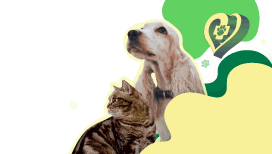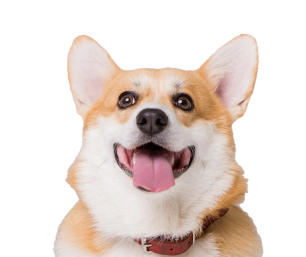Is a fat cat beautiful?
Опубліковано
18.12.2019
We often come across the opinion of cat owners that a rounded belly and convex flanks are a cat's adornment. The idea of the size of such "decorations" varies from person to person. Nevertheless, "round" cats are actually obese. According to a number of studies, up to 52% of cats in different countries are overweight or obese.
How can you tell if your cat is overweight?
A cat with a normal weight does not have visible ribs and spine, but they are easy to feel; the waist is noticeable; there is some fat on the abdomen.
Obesity is 15-20% overweight (relative to the ideal weight) due to adipose tissue. This is a chronic metabolic disorder accompanied by impaired appetite and energy consumption, which turns into a chronic inflammatory syndrome that causes a huge number of different painful conditions.
Why is obesity in cats so dangerous? Overweight cats are prone to:
- diabetes mellitus
- osteoarthritis
- arterial hypertension
- cardiovascular diseases
- some skin diseases
- neoplasms
- diseases of the lower urinary tract
- Pickwick's syndrome (shortness of breath and other lung disorders due to chest compression)
- liver lipidosis
- poor tolerance to high ambient temperatures
More than half of these disorders can lead not only to suffering but also to the cat's death.
The main causes of obesity are overeating and lack of sufficient physical activity. Neutering (spaying) without appropriate dietary correction can also contribute to overweight and obesity.
Returning to normal weight for an obese cat is not easy. It is strictly forbidden to starve such a cat.
That is why it is important to prevent cats from becoming overweight:
- If you use ready-to-eat foods, feed your cat according to the amounts indicated on the food packaging.
- The use of wet food, unlike many dry foods, allows you to reduce carbohydrate intake
- Play with your cat more often
- Provide opportunities for your cat to run and jump. Toys in which you can hide treats or food pellets can be useful
- Treats should make up no more than 10% of daily caloric intake
- Reward your pet with communication with you, not just treats
- Tell your family about the dangers of obesity in cats
- It is important to carefully monitor weight after neutering (spaying); your veterinarian will help you choose the right diet.
Схожі статті

How to prepare your cat for a stress-free visit to the veterinary clinic
Cats are independent and sensitive animals, and a visit to the vet can be a big challenge for them. How can you avoid stress during transportation? What medications can help calm your cat? In this article, we tell you how to properly prepare for a visit to the clinic, choose a carrier, and create comfortable conditions for your cat.

Starvation diet for animals before anesthesia.
Modern recommendations

